15 Perennials That Look Beautiful Even After the Frost
When frost touches the garden, some perennials keep their charm long after others fade. These hardy plants bring color, shape, and texture even through chilly mornings. Their leaves and seed heads catch the light in beautiful ways, turning a cold day into something special. Here are some perennials that stay lovely even after the frost settles in.
This post may contain affiliate links, which helps keep this content free. Please read our disclosure for more info.
Sedum ‘Autumn Joy’
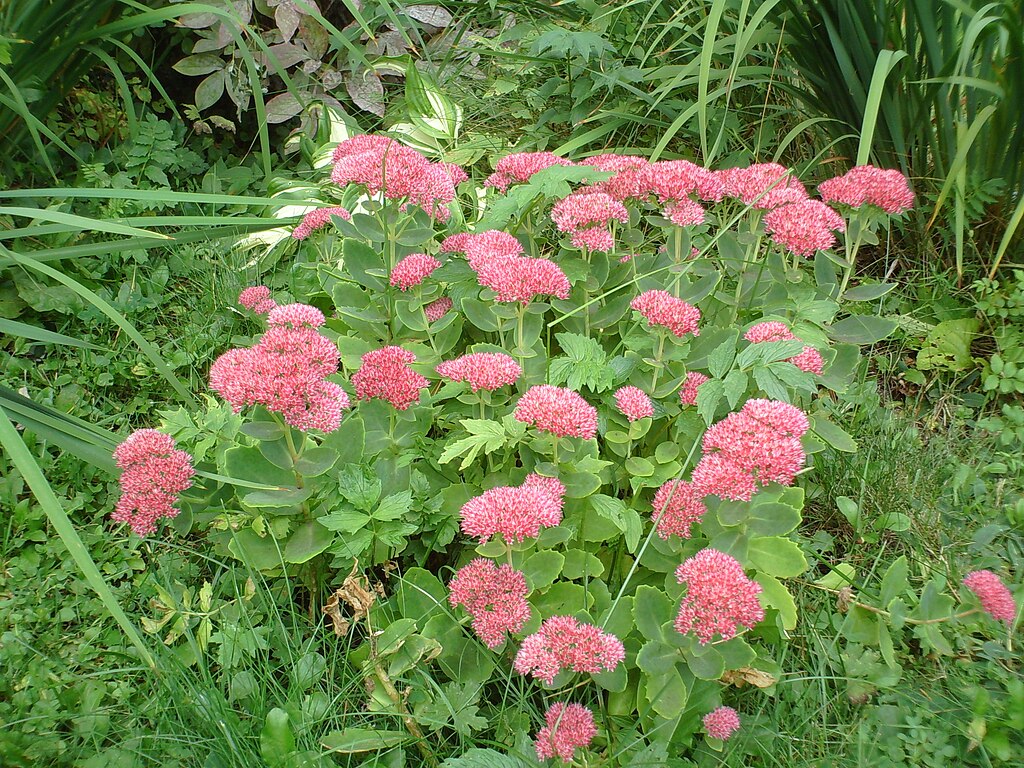
Sedum ‘Autumn Joy’ is a favorite for fall gardens because of its thick, fleshy leaves and sturdy stems. Its pink blooms shift to coppery red as the weather cools, creating a beautiful contrast against fading foliage. Even when frost arrives, the flower heads dry into lovely clusters that hold their shape through winter. The structure adds texture and interest when most other plants are gone.
This perennial thrives in full sun and well-drained soil, making it easy to grow and dependable each year. Birds often perch on its stiff stems and peck at the seed heads in winter. Leave the dried blooms in place until spring for natural beauty in cold months. Cutting them back too early means losing that winter charm.
Hellebores (Lenten Rose)

Hellebores are among the first flowers to bloom as winter fades, often pushing through frost and snow. Their deep green leaves stay firm even in cold weather, creating a striking backdrop for their soft blooms. The flowers come in shades of white, pink, and plum, and they often last for weeks. Even when chilled by frost, they bend slightly and then perk back up as temperatures rise.
These shade-loving plants are perfect for spots under trees or near entryways where their color stands out in dull seasons. They prefer moist, rich soil but can handle dry spells once established. Deer and rabbits usually stay away, making them a dependable choice for quiet corners. Over time, they form beautiful clumps that return stronger each year.
Ornamental Grasses (like Feather Reed Grass)
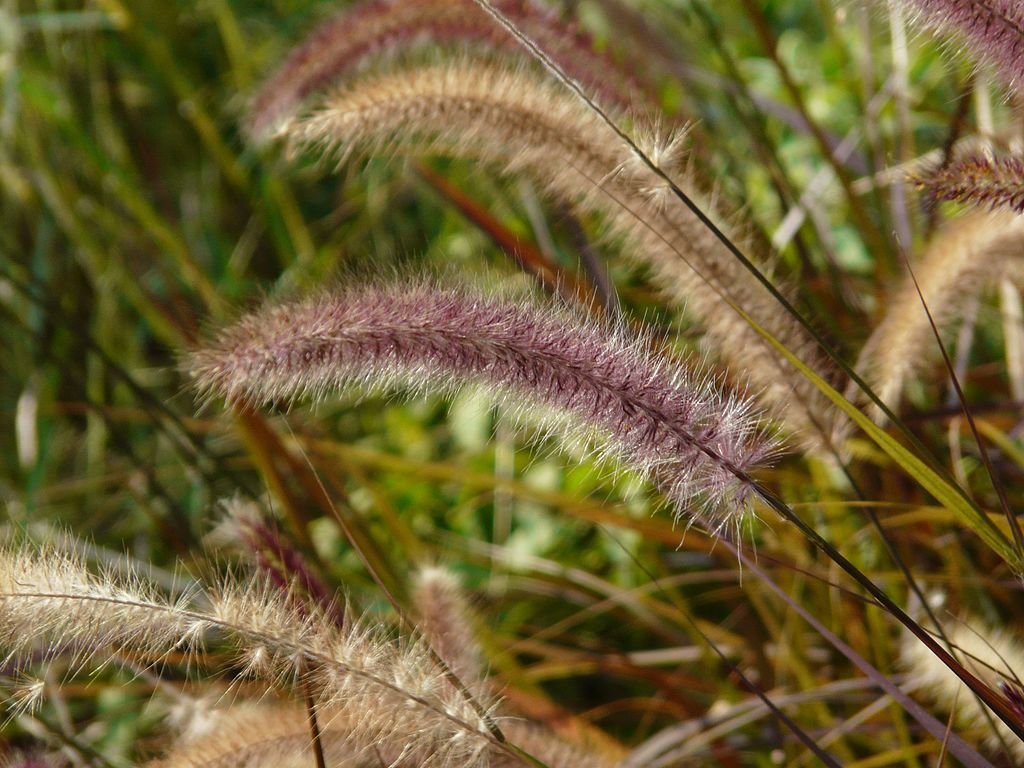
Feather Reed Grass stands tall and graceful, adding movement to the garden long after the flowers are gone. Its slender stalks catch frost beautifully, shimmering in early light. Even as temperatures drop, the plumes stay upright and golden, creating a lovely silhouette against snow. The sound of the dry blades swaying in the breeze brings life to quiet winter days.
This grass grows well in both borders and open areas where it can sway freely. It thrives in full sun and tolerates a wide range of soils, needing little care once rooted. Many gardeners leave it uncut through winter to enjoy its natural structure. When spring returns, trimming it back helps new growth emerge fresh and green.
Coral Bells (Heuchera)
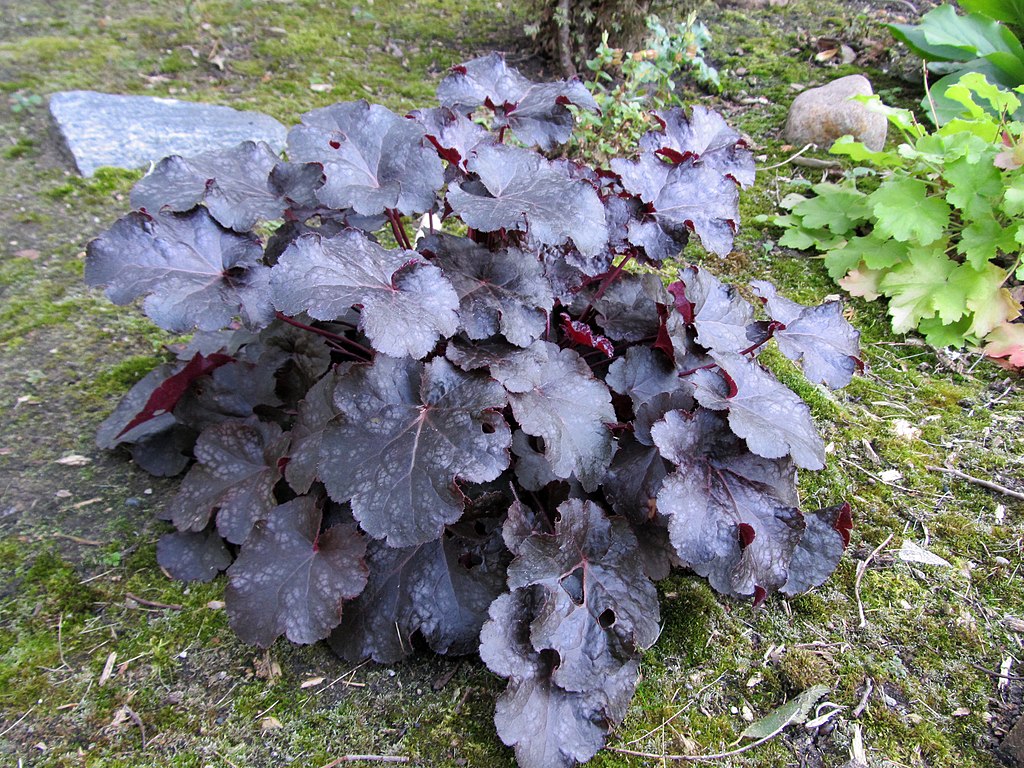
Coral Bells keep their color even when frost settles on the garden. Their leaves come in shades of bronze, silver, and deep purple, giving constant contrast against dull surroundings. While small flowers bloom in summer, the foliage remains the main attraction all year. In colder months, frost edges the leaves with a glittering outline that looks magical.
These perennials do well in part shade and like soil that drains easily. They pair beautifully with hostas and ferns, bringing variety to shady spots. Regular watering keeps them healthy, but they tolerate brief dry spells. Once planted, they form neat clumps that look fresh through the changing seasons.
Russian Sage (Perovskia atriplicifolia)
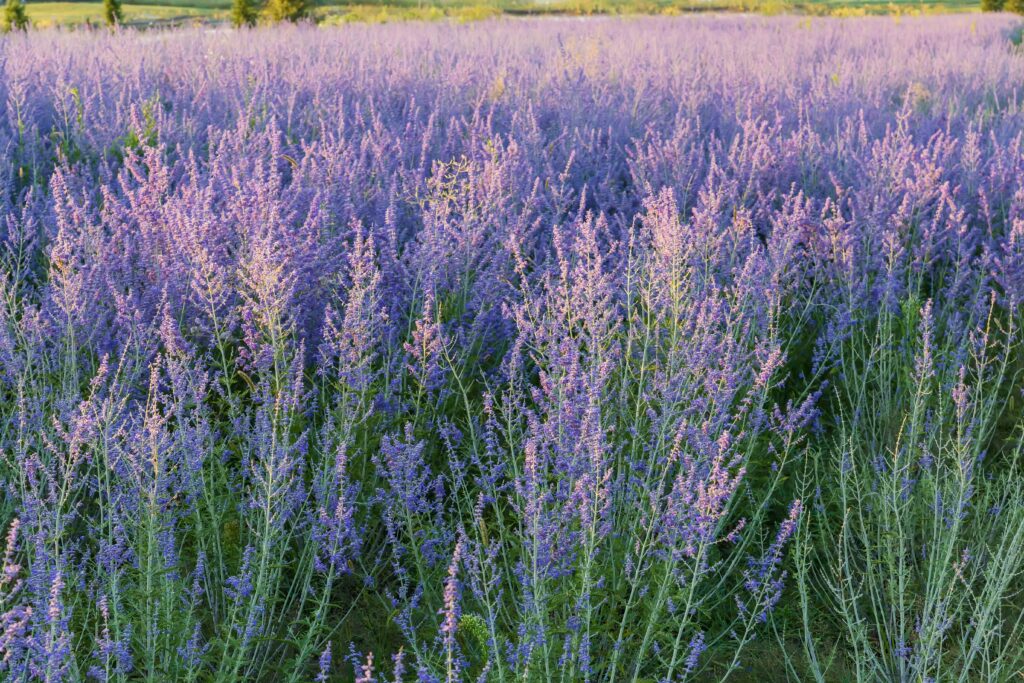
Russian Sage adds soft color to the late garden with its silvery stems and lavender-blue blooms. Even when the flowers fade, the airy texture and pale foliage remain striking under frost. The plant’s woody stems stand tall through winter, catching ice crystals and light. Its scent lingers in the air when brushed, adding a subtle reminder of summer.
This sun-loving perennial grows best in dry, open soil where drainage is good. It thrives with little care and stays drought-tolerant once established. Butterflies love it in warmer months, and its shape keeps the garden interesting when blooms are gone. Prune it back in spring to refresh the silvery new growth.
Coneflower (Echinacea)

Coneflowers hold their beauty even after frost blackens the petals. Their raised centers remain bold and striking, turning dark brown or black as seed heads dry. Frost collects on them, adding sparkle that catches the morning light. Birds flock to these sturdy stems, pecking at seeds through late fall and winter.
They are easy perennials that love sun and well-drained soil. Coneflowers come in many colors, but even the traditional purple variety stands strong through cold. They mix well with grasses and asters for long-lasting displays. Once the snow melts, trim back the stems to make room for spring’s return.
Black-eyed Susan (Rudbeckia)
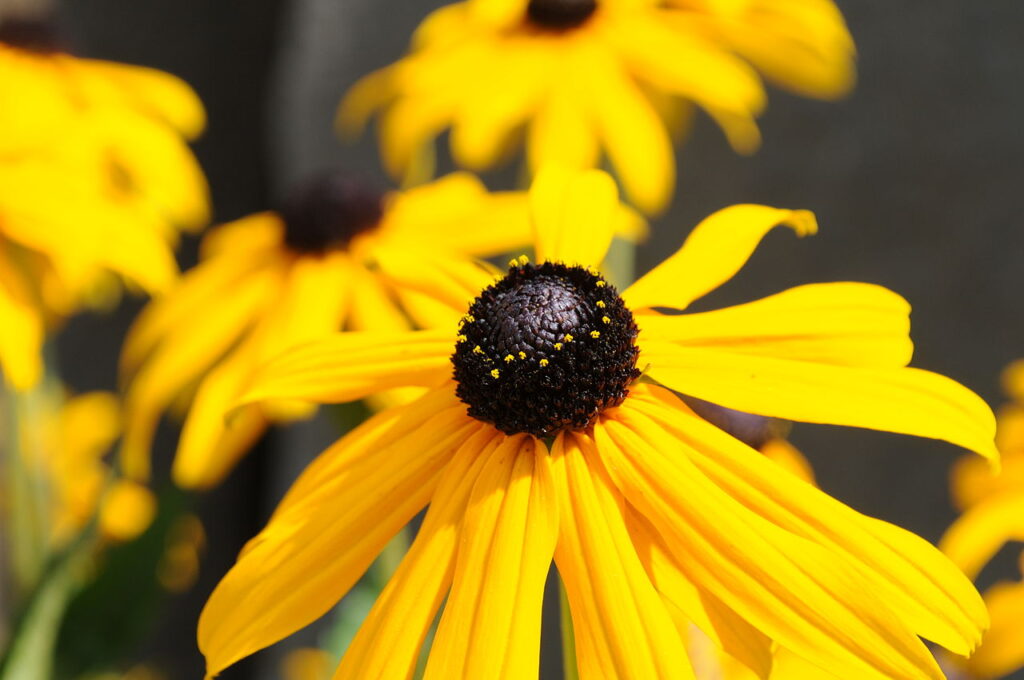
Black-eyed Susans bring warmth to the garden even as days shorten. Their yellow petals fade slowly, leaving behind striking seed heads that resist frost. The dried flowers stand firm and provide texture when most colors fade away. Birds, especially finches, find plenty to eat among them through late fall.
These hardy perennials grow easily in almost any sunny spot. They return reliably each year, spreading gently to fill empty patches. They pair well with coneflowers and ornamental grasses for a natural look. Leaving them through winter gives structure and food for wildlife.
Aster
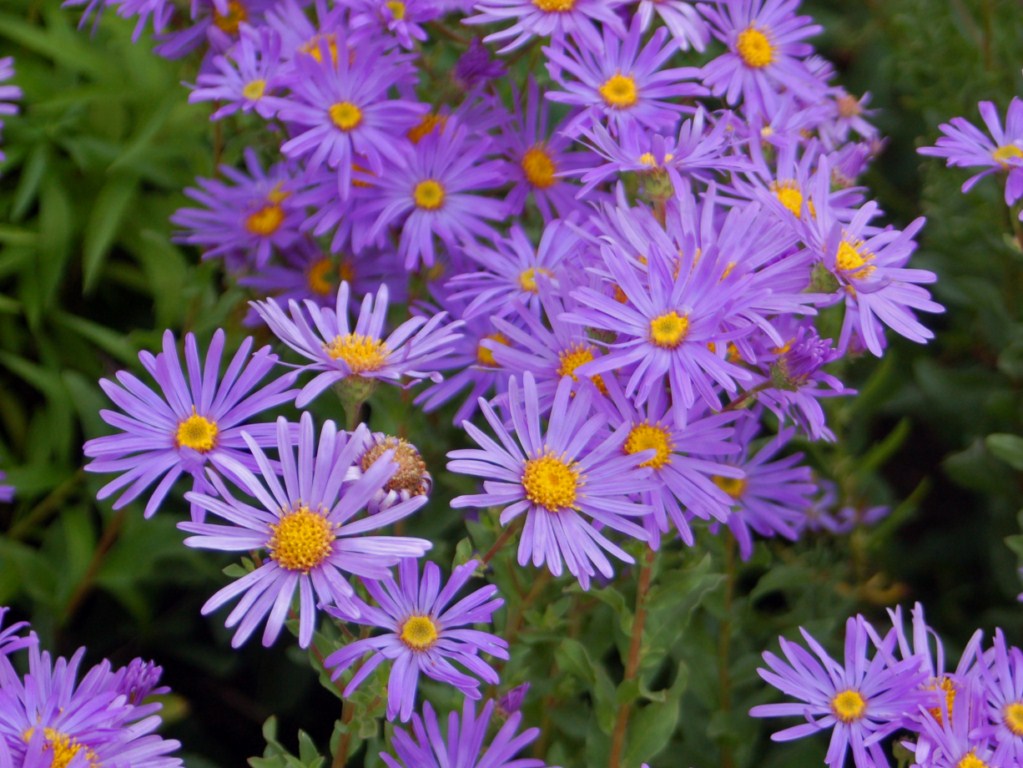
Asters bloom late in the season, offering one last burst of color before frost. Their small daisy-like flowers come in shades of blue, pink, and purple that light up the autumn garden. When frost arrives, the faded blooms still hold form and contrast nicely against fallen leaves. The stems stay upright, catching ice and morning dew beautifully.
These perennials thrive in sunny areas with good air circulation. They attract butterflies and bees, making them favorites for pollinator gardens. Regular deadheading keeps them neat through fall, though even spent flowers look graceful in cold weather. Cutting them back in early spring helps them return stronger each year.
Yarrow (Achillea)
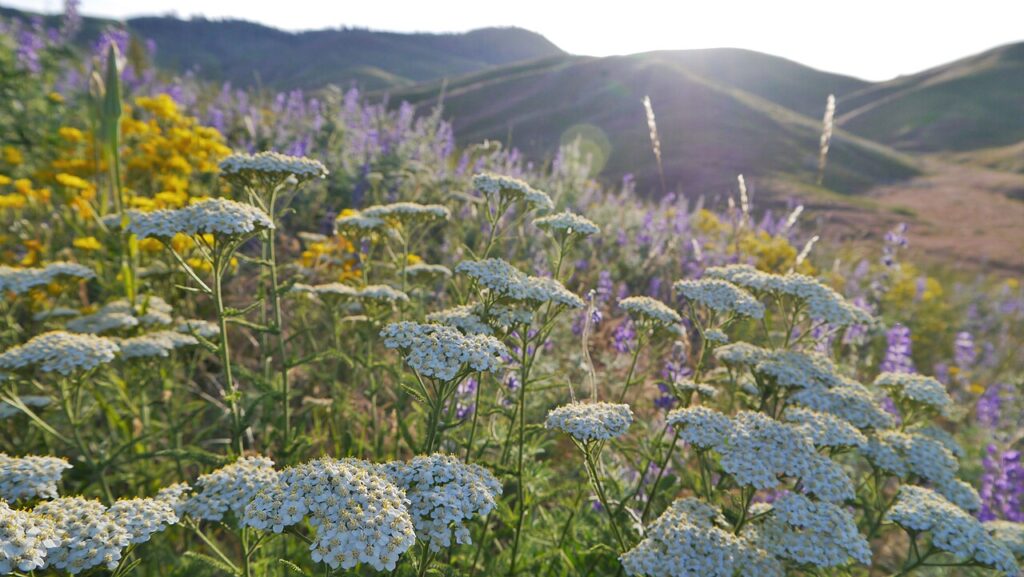
Yarrow’s feathery leaves and sturdy stems hold their shape well after frost. Its flat flower clusters dry beautifully, adding structure and texture to quiet winter beds. The silvery-green foliage stays attractive even when temperatures drop. It is one of those plants that stays elegant, even when covered with a light layer of snow.
This perennial thrives in full sun and poor soil, needing little maintenance. It’s drought-tolerant and spreads slowly, filling gaps naturally. Yarrow also resists deer and rabbits, making it perfect for open gardens. Trim it back in spring to refresh its tidy mound of foliage.
Catmint (Nepeta)
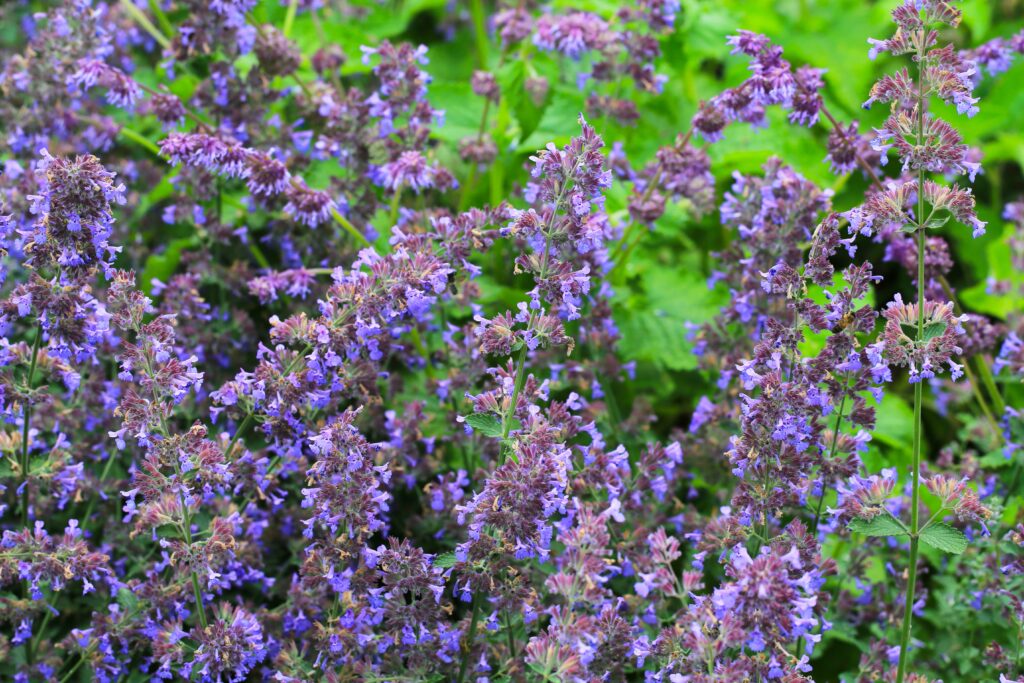
Catmint produces soft purple flowers that last well into fall, and even after frost, its silvery foliage remains appealing. The leaves hold a gentle scent, and their shape keeps its form when frozen. Frost crystals cling to its edges, giving it a soft shimmer on cold mornings. The plant keeps a low mound that looks lovely alongside stones and paths.
This sun-loving perennial grows easily in dry soil and spreads gently over time. Bees and butterflies visit its blooms all season long. Once frost takes the flowers, the foliage still adds color and shape. A quick trim in spring keeps it neat and ready for another year.
Lamb’s Ear (Stachys byzantina)
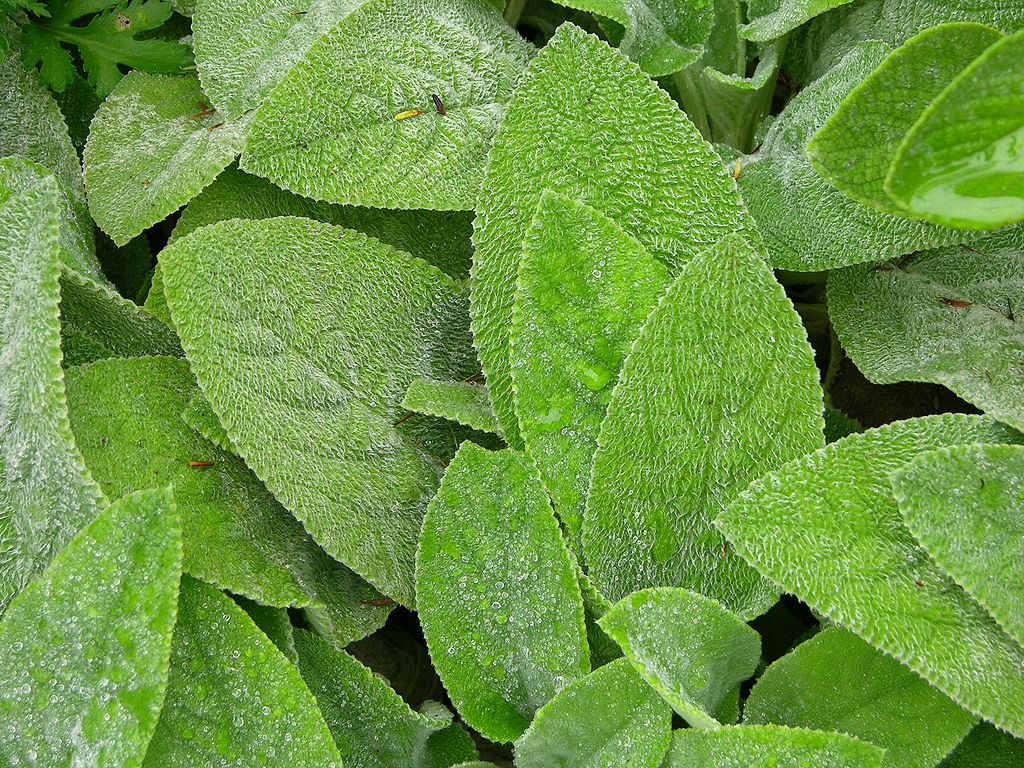
Lamb’s Ear stays lovely long after other plants fade. Its velvety leaves catch frost in a way that makes them shine under winter light. Even without flowers, the silver-gray foliage forms a soft carpet that brightens dull corners. It’s a plant that looks good through every stage of the season.
This perennial loves dry, sunny spots and poor soil. It spreads slowly and is easy to divide when clumps grow large. Deer usually ignore it, making it perfect for open garden edges. In spring, new fuzzy leaves replace the old ones for a fresh start.
Sea Holly (Eryngium)
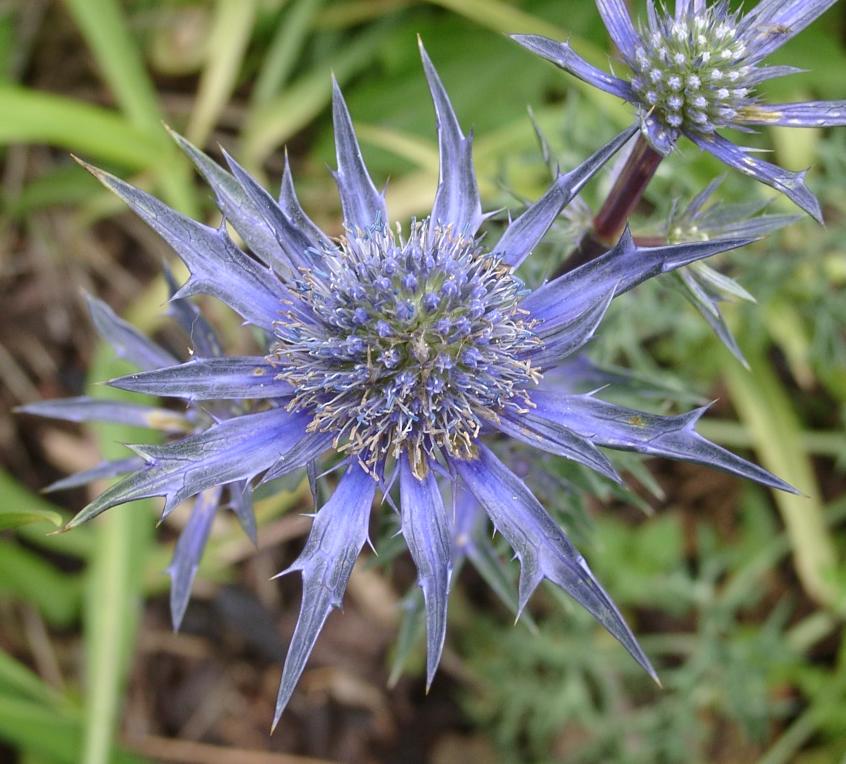
Sea Holly stands out with its metallic blue flowers and spiky texture. Even when frost hits, the stems stay upright and continue to glow with silvery tones. Its sculptural form makes a striking contrast against soft plants nearby. The dried blooms last all winter and add height to garden beds.
It prefers sandy or well-drained soil and full sunlight. Once established, it’s tough and drought-resistant. Bees love it in summer, and gardeners love how it holds form through winter. Leaving it uncut gives the garden a touch of wild beauty when snow falls.
Blanket Flower (Gaillardia)
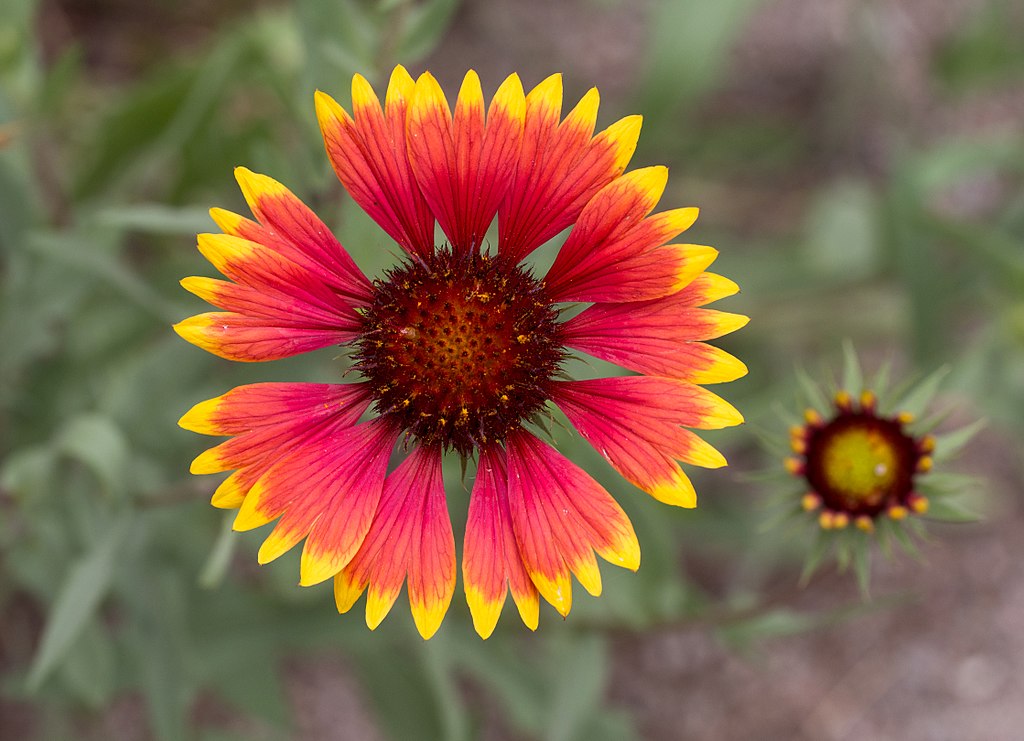
Blanket Flower brings late-season color with its red and yellow petals. When frost arrives, the blooms dry into lovely shapes that keep their warm tones. The fuzzy seed heads stay through winter, adding charm even without color. This plant continues to look cheerful as temperatures dip.
It thrives in sunny spots with dry, sandy soil. The plant blooms for months, drawing butterflies during warmer days. Once frost hits, its seed heads feed birds through the cold months. Cutting it back in spring encourages new blooms to form quickly.
Garden Phlox

Garden Phlox offers clouds of color in late summer and early fall. Even when the flowers fade, the tall stems and seed clusters hold their shape after frost. The leaves sometimes take on bronze or purple tones as the season cools. When frost covers them, they glisten in the sunlight.
This plant enjoys sunny conditions with rich, moist soil. It can grow tall, so it’s best for the back of borders or near fences. Regular watering and spacing help prevent mildew. Leave the dried stems for structure, then cut back before spring growth begins.
Hardy Geranium (Cranesbill)
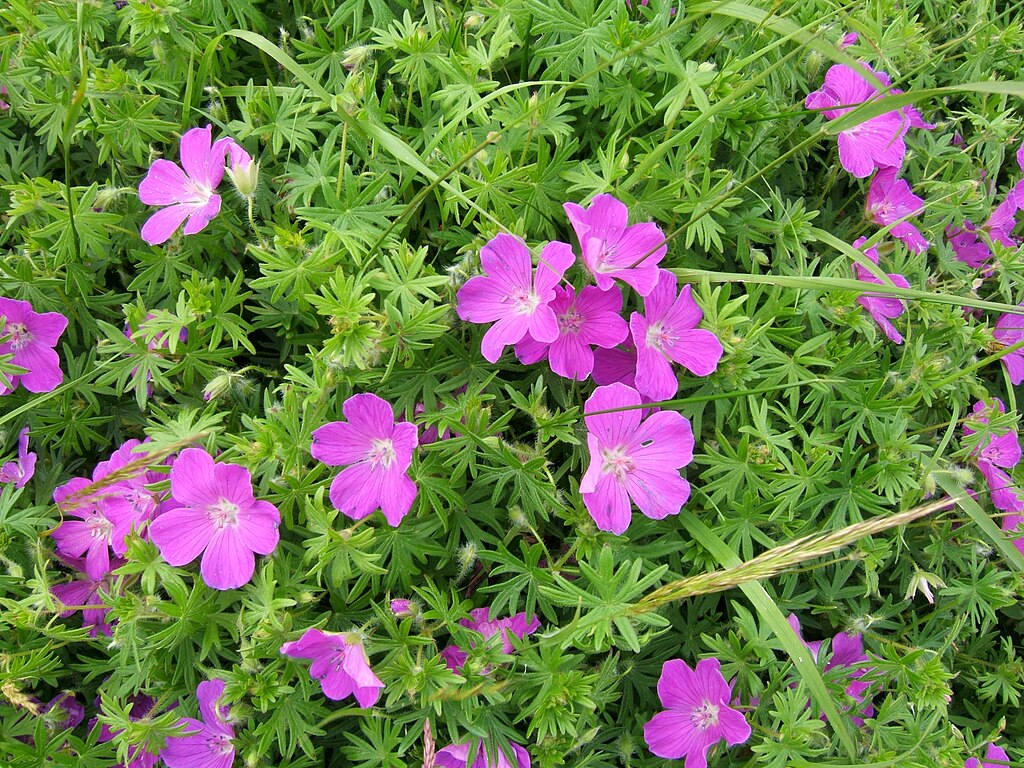
Hardy Geraniums stay tidy and green long into fall. Their small, rounded leaves often turn shades of red and bronze as frost sets in. Even after freezing nights, they hold their shape and add warmth to the garden. When paired with other cold-hardy plants, they tie everything together beautifully.
These perennials grow easily in sun or partial shade. They spread gently without becoming invasive and require little care. In spring, new leaves replace the old, keeping the plant full and lush. Their dependable color and form make them a favorite for long-lasting beauty.
This article originally appeared on Avocadu.
